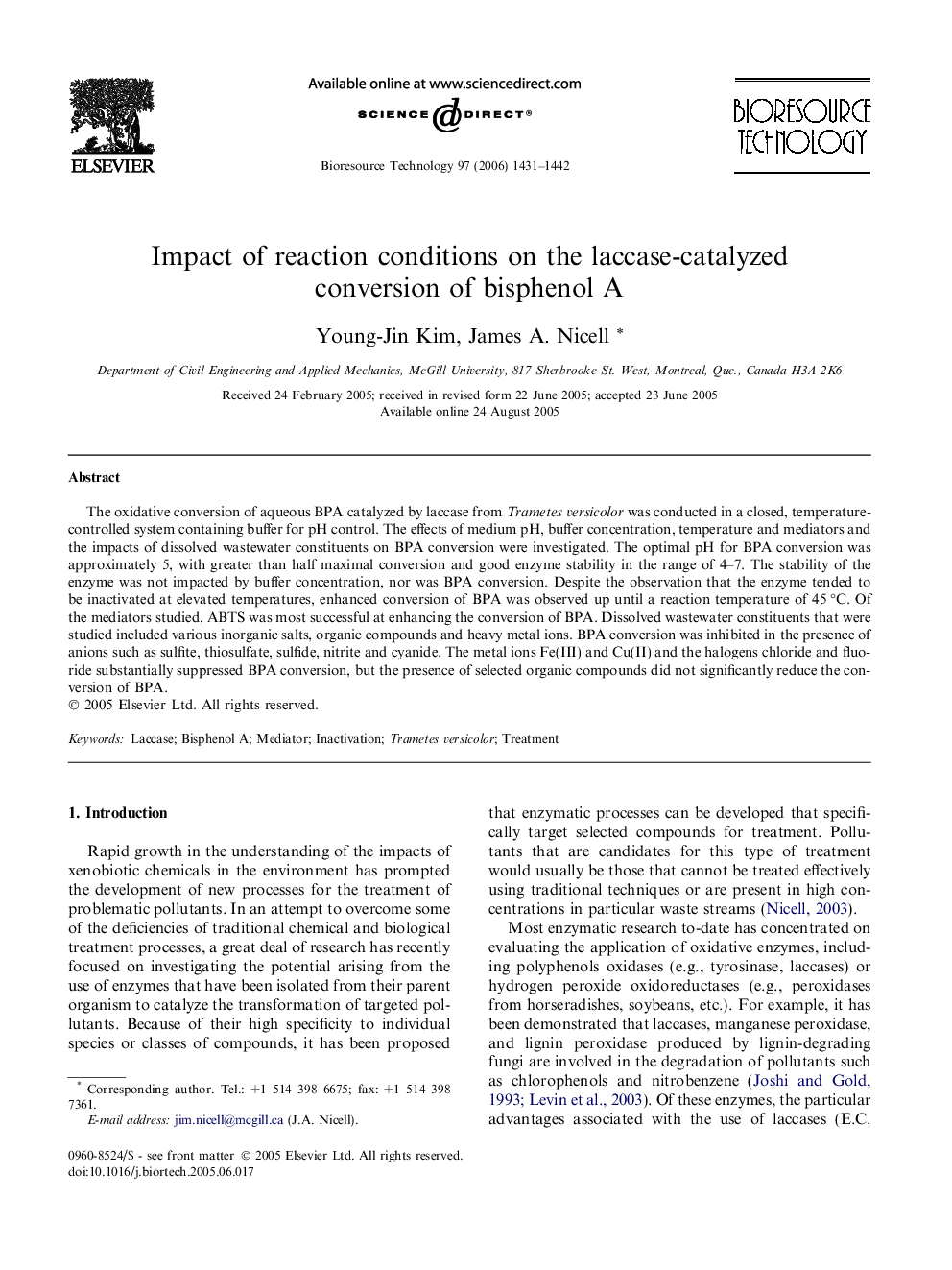| Article ID | Journal | Published Year | Pages | File Type |
|---|---|---|---|---|
| 685659 | Bioresource Technology | 2006 | 12 Pages |
The oxidative conversion of aqueous BPA catalyzed by laccase from Trametes versicolor was conducted in a closed, temperature-controlled system containing buffer for pH control. The effects of medium pH, buffer concentration, temperature and mediators and the impacts of dissolved wastewater constituents on BPA conversion were investigated. The optimal pH for BPA conversion was approximately 5, with greater than half maximal conversion and good enzyme stability in the range of 4–7. The stability of the enzyme was not impacted by buffer concentration, nor was BPA conversion. Despite the observation that the enzyme tended to be inactivated at elevated temperatures, enhanced conversion of BPA was observed up until a reaction temperature of 45 °C. Of the mediators studied, ABTS was most successful at enhancing the conversion of BPA. Dissolved wastewater constituents that were studied included various inorganic salts, organic compounds and heavy metal ions. BPA conversion was inhibited in the presence of anions such as sulfite, thiosulfate, sulfide, nitrite and cyanide. The metal ions Fe(III) and Cu(II) and the halogens chloride and fluoride substantially suppressed BPA conversion, but the presence of selected organic compounds did not significantly reduce the conversion of BPA.
